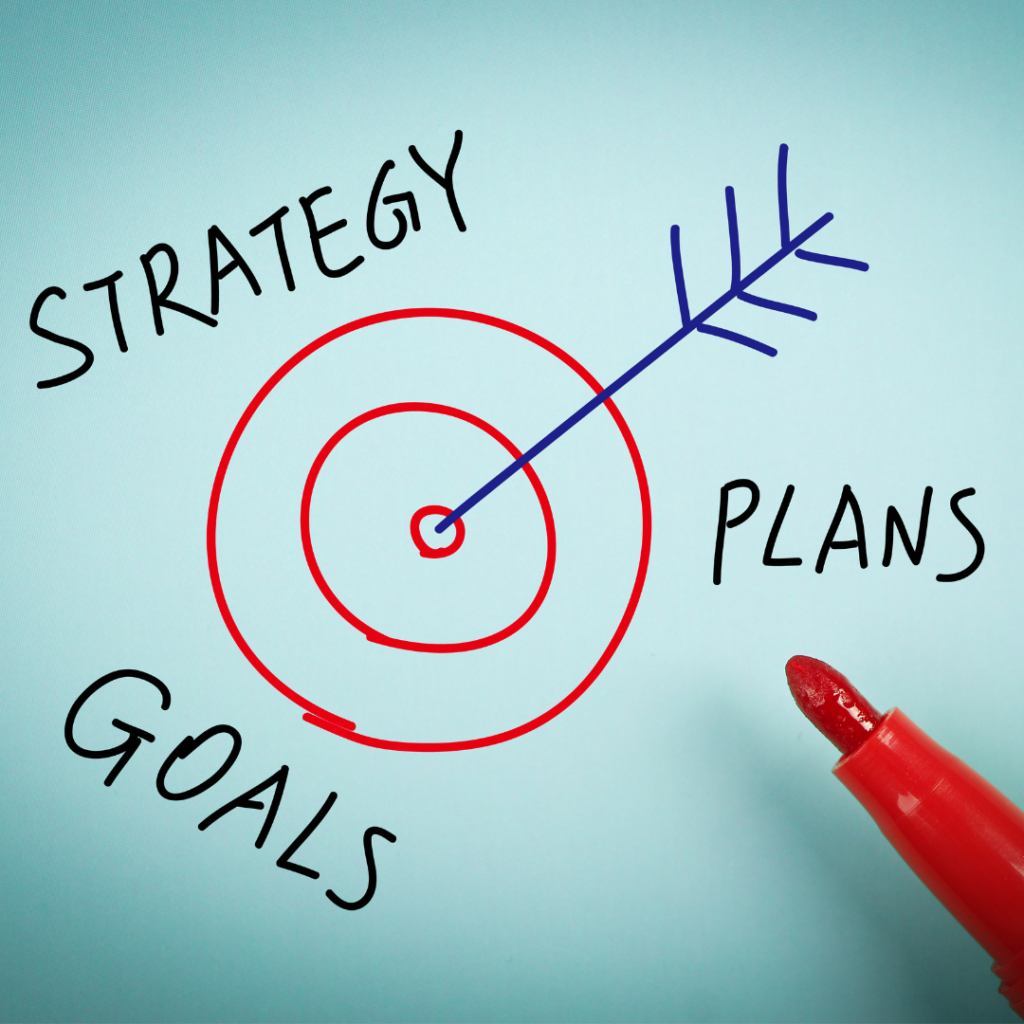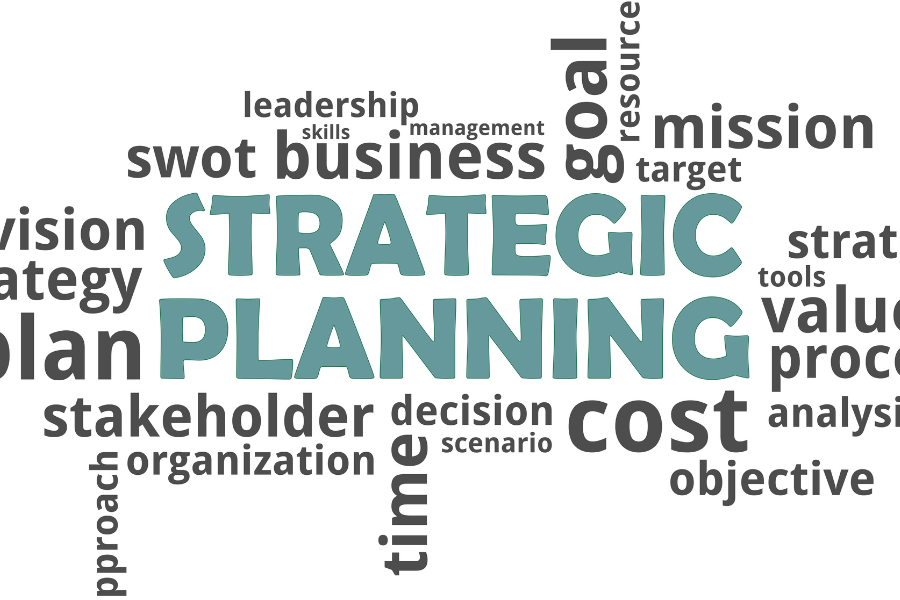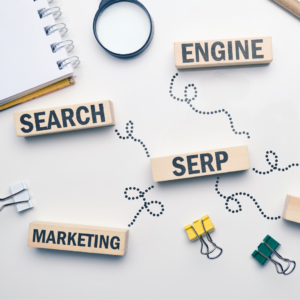Strategic planning for business is like having a treasure map. It helps you know exactly where you’re going and how to get there. Whether you’re a CEO, entrepreneur, or just someone who wants to see their business grow, this guide will show you why strategic planning is so important. Ready to learn more? Let’s dive in!

What is Strategic Planning?
Imagine you’re building a treehouse. You wouldn’t just start hammering wood together, right? You’d make a plan first. That’s what strategic planning is for your business—it’s the blueprint for success.
While a business plan serves as a roadmap for funding and current operations, focusing on short to mid-term goals and operational details, a strategic plan targets long-term direction and growth, illustrating the distinct purposes and timeframes involved in each type of planning.
Strategic planning means setting a clear direction for your business. You create goals, decide on steps to reach those goals, and keep track of how you’re doing. It’s especially important for C-suite executives and entrepreneurs who want to make smart decisions and lead their teams with confidence.
Enroll in our Strategic Planning Course for Retail Business Leaders to gain these skills now!
Why Is Strategic Planning Important for Business Growth?
Every successful business has a plan. Strategic planning allows you to focus on what’s important, ensuring you don’t get distracted by everyday tasks. Without it, it’s easy to lose sight of the bigger picture. Strategic planning creates a roadmap for business success, so your business can continue to grow and thrive.
A successful business strategy incorporates both internal strengths and weaknesses alongside external threats and opportunities. By using tools like a SWOT analysis, companies can effectively outline how to develop, market, and sell their products or services while maximizing growth potential.
For example, companies like Apple and Amazon didn’t become industry leaders by chance. They had strategic plans that helped them navigate through competition, changing markets, and unexpected challenges. A good plan is like a compass that keeps you moving in the right direction.
Check out more leadership courses here to see how you can grow your skills!

The Key Ingredients of a Strategic Plan
So, what makes a good strategic plan? There are a few key pieces that every successful plan needs:
Vision: What’s your business’s big dream? This is your long-term goal.
Mission: Why does your business exist? What problem does it solve?
Objectives: These are smaller goals that help you achieve your vision.
SWOT analysis: This stands for Strengths, Weaknesses, Opportunities, and Threats. Understanding these helps you make better decisions.
KPIs: Key Performance Indicators measure how well your plan is working.
Operational Planning: Establishing guidelines and procedures for daily operations to align with long-term goals.
By following these steps, you can ensure your business stays on track and moves toward its vision of success.
The Strategic Planning Process
Strategic planning is a structured approach that guides your business toward achieving its long-term goals. Think of it as a detailed roadmap that outlines the steps you need to take to reach your destination. This process involves several key steps, each designed to help you understand your current position, set clear objectives, and develop a plan to achieve them. By following a strategic planning process, you can ensure that your business stays focused and on track, even in a rapidly changing business environment.
Step 1: Assess Your Current Business Strategy and Environment
The first step in the strategic planning process is to assess your current business strategy and environment. This involves taking a close look at where your business stands today. Start by conducting a SWOT analysis to identify your company’s strengths, weaknesses, opportunities, and threats. This will give you a clear picture of your internal capabilities and external challenges.
Next, analyze your business environment using tools like PESTLE analysis, which examines political, economic, social, technological, legal, and environmental factors. Understanding these elements helps you stay ahead of market trends and anticipate changes that could impact your business. Market research is also crucial at this stage, as it provides valuable insights into your industry, competitors, and customers.
By thoroughly assessing your current business strategy and environment, you can identify areas for improvement and opportunities for growth, setting a solid foundation for your strategic plan.
Step 2: Identify Your Company’s Goals and Objectives
After gaining a comprehensive comprehension of your present situation, the subsequent phase involves pinpointing your organization’s aims and targets. This involves defining what you want to achieve in both the short-term and long-term. Your goals should be specific, measurable, achievable, relevant, and time-bound (SMART).
Start by crafting a vision statement that outlines your company’s purpose and long-term aspirations. This vision will serve as a guiding star for your strategic planning process. Complement this with a mission statement that defines your company’s core values and goals.
Using goal-setting frameworks like the SMART criteria ensures that your objectives are clear and actionable. For example, instead of setting a vague goal like “increase sales,” aim for “increase sales by 15% within the next fiscal year.” This specificity helps you create a focused and effective strategic plan.
Step 3: Develop Your Strategic Plan
With your goals and objectives in place, it’s time to develop your strategic plan. This plan will serve as a detailed roadmap for achieving your company’s vision. Start by clearly articulating your vision and mission statements, as these will guide all your strategic decisions.
Include a comprehensive SWOT analysis and PESTLE analysis to understand your business environment and identify your competitive advantages. Conduct market research to gain insights into your industry, competitors, and customers. This information will help you make informed decisions and prioritize your strategic objectives.
Your strategic plan should also outline specific, measurable, achievable, relevant, and time-bound (SMART) goals and objectives. Use strategic planning templates and business planning software to structure your plan and ensure that all necessary elements are covered. Additionally, establish key performance indicators (KPIs) to measure progress and success, allowing you to track your achievements and make adjustments as needed.

Steps to Implement the Strategic Planning Process in Your Business
How do you start strategic planning for your business? Here’s a simple, step-by-step guide:
Analyze where you are now: What’s working well, and what needs improvement?
Set clear, measurable goals: Be specific! For example, instead of saying, “We want to grow,” say, “We want to increase revenue by 20% next year.”
Create an action plan: What steps will you take to reach your goals? Who’s responsible for each part?
Monitor progress: Keep track of how well your plan is working. If things aren’t going as expected, adjust your approach.
Strategic management is essential as it encompasses strategic planning, organizing resources, evaluating progress, and adjusting actions to ensure long-term success.
There are tools available, like visualization software, that can make strategic planning much easier. These tools help you map out your goals and track your progress in real-time.
Feeling stuck? Get in touch for more information here and we’ll help you get started!
Strategic Planning Tools and Resources
To effectively implement your strategic plan, you’ll need the right tools and resources. These can help you structure your plan, manage your progress, and measure your success. Some popular tools and resources include:
Strategic Planning Templates: These templates provide a structured format for your strategic plan, ensuring that you cover all essential elements.
Business Planning Software: Platforms like Asana and Trello help you create, manage, and track your strategic plan, making the planning process more efficient.
SWOT and PESTLE Analysis Frameworks: These frameworks help you understand your business environment and identify opportunities and threats.
Market Research Reports: These reports provide valuable insights into your industry, competitors, customers, and market trends.
Competitive Advantages Analysis Frameworks: These tools help you identify your company’s unique strengths and weaknesses.
Strategic Objectives Frameworks: These frameworks assist in prioritizing your goals and objectives.
Key Performance Indicators (KPIs) Frameworks: These frameworks help you measure progress and success, ensuring that you stay on track.
For comprehensive guidance and resources, consider using the Harvard Business School’s Strategic Planning Toolkit or the Balanced Scorecard Institute’s Strategic Planning Framework. These tools provide detailed instructions and templates to help you create and manage an effective strategic plan.
By leveraging these tools and resources, you can streamline your strategic planning process and set your business up for long-term success.

Overcoming Challenges in Strategic Planning
Great leadership is the secret ingredient to any successful strategic plan. A strong leader not only creates the plan but also inspires their team to follow it. Leadership courses can help sharpen these skills, enabling you to guide your business toward long-term success.
Strategic planning is an ongoing process that requires regular evaluation and adjustment to stay aligned with current realities and future projections.
In fact, many of today’s most successful CEOs credit their leadership training as the key to their ability to make tough decisions and drive their business forward. Want to improve your leadership skills? Take a look at our leadership courses to get started.
Real-Life Case Studies of Strategic Planning Success
Let’s look at some real-world examples of strategic planning in action.
Apple: When Steve Jobs returned to Apple in 1997, the company was on the brink of collapse. Jobs implemented a clear strategic plan, focusing on innovation and design, which transformed Apple into one of the most successful companies in the world.
Starbucks: In the early 2000s, Starbucks expanded too quickly and began to lose its focus. The leadership team developed a strategic plan to refocus on customer experience, which helped the company regain its position as a coffee industry leader.
These companies didn’t just hope for success—they planned for it.
Conclusion: Why Every Entrepreneur Needs a Strategic Plan
If you’re serious about growing your business, strategic planning is non-negotiable. It’s the difference between wandering around without direction and leading your team confidently toward a clear, successful future. Whether you’re just starting or looking to take your business to the next level, now is the time to make strategic planning a priority.
Take charge of your business’s future. Enroll in our Strategic Planning Course for Retail Business Leaders today and set yourself up for long-term success!




